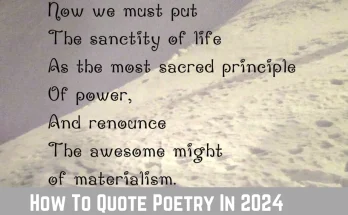“Exploring the Splendor of Nature: An Analysis of William Wordsworth’s Poem ‘Daffodils'”. William Wordsworth’s renowned poem “Daffodils” captures the essence of the Romantic Movement through its vivid portrayal of nature’s beauty. In this article, we will see What type of poem is “Daffodils” by William Wordsworth?
Published in 1807, the poem explores the profound impact of encountering a field of daffodils. It offers readers a profound sense of joy and tranquility. This article delves into the type of poem that “Daffodils” represents and provides a comprehensive analysis of its thematic elements, poetic devices, and the lasting significance it holds in the realm of English literature.
The Type of Poem: What type of poem is “Daffodils” by William Wordsworth?
A Romantic Lyric:
“Daffodils” can be categorized as a Romantic lyric poem, a form extensively explored by Wordsworth. As a lyric poem, it expresses the poet’s personal emotions and reflections in a highly imaginative and musical manner. Wordsworth’s focus on the emotional experience of encountering the daffodils aligns with the central tenets of Romanticism: the celebration of individualism, the sublime beauty of nature, and the connection between humanity and the natural world.
Thematic Elements:
The poem weaves together various thematic elements that contribute to its enduring appeal. Firstly, “Daffodils” exalts the power of nature to uplift the human spirit. Wordsworth’s description of the daffodils dancing and fluttering in the breeze creates a sense of joy and ecstasy. It reflects the Romantics’ belief in the transformative and restorative effects of nature.
Furthermore, the poem explores the theme of memory and its ability to evoke emotions. Wordsworth, in his recollection of the daffodils, emphasizes their lasting impact on his psyche, symbolizing the enduring power of nature to shape one’s thoughts and emotions.
Poetic Devices:
Wordsworth employs various poetic devices to enhance the impact of his poem. The abundant use of imagery creates vivid and captivating visuals, enabling readers to immerse themselves in the scene. For instance, phrases like “golden daffodils,” “tossing their heads,” and “continuous as the stars” evoke a sense of wonder and beauty.
Moreover, the poem employs personification to give life and agency to the daffodils themselves, emphasizing their animated presence. This technique adds depth and vitality to the portrayal of nature, strengthening the emotional connection between the reader and the natural world.
Lasting Significance:
“Daffodils” remains a beloved poem with enduring significance in English literature. Its themes of nature’s transformative power and the beauty of the ordinary have resonated with readers for centuries. Moreover, the poem’s simplicity and accessibility make it an ideal introduction to the Romantic Movement and its emphasis on emotion, individuality, and the sublime in nature.
Conclusion: What type of poem is “Daffodils”?
In conclusion, William Wordsworth’s poem “Daffodils” exemplifies the essence of Romantic lyricism. Through its celebration of nature’s beauty, exploration of memory, and skillful use of poetic devices, the poem leaves a lasting impression on readers, reminding them of the profound connection between humanity and the natural world.



